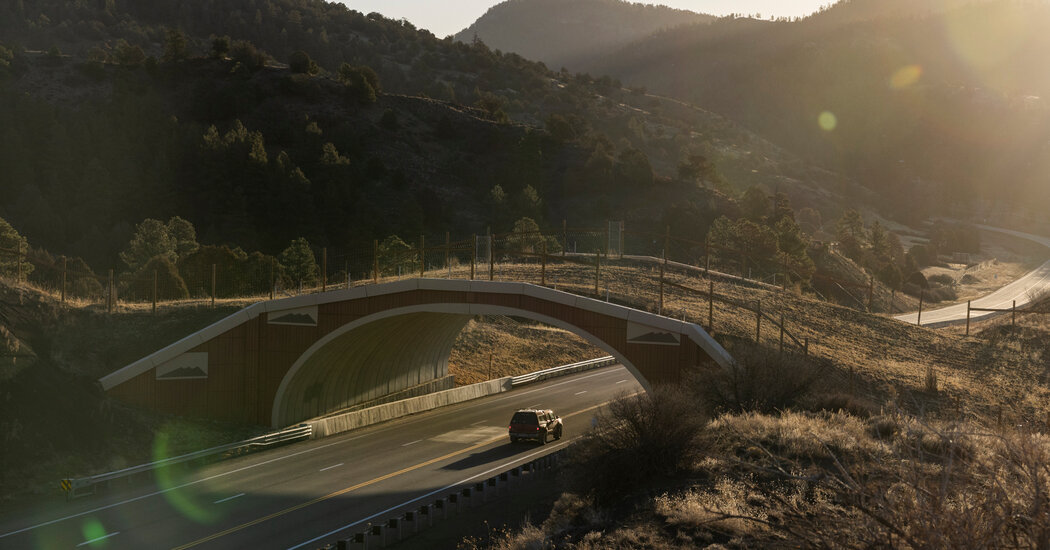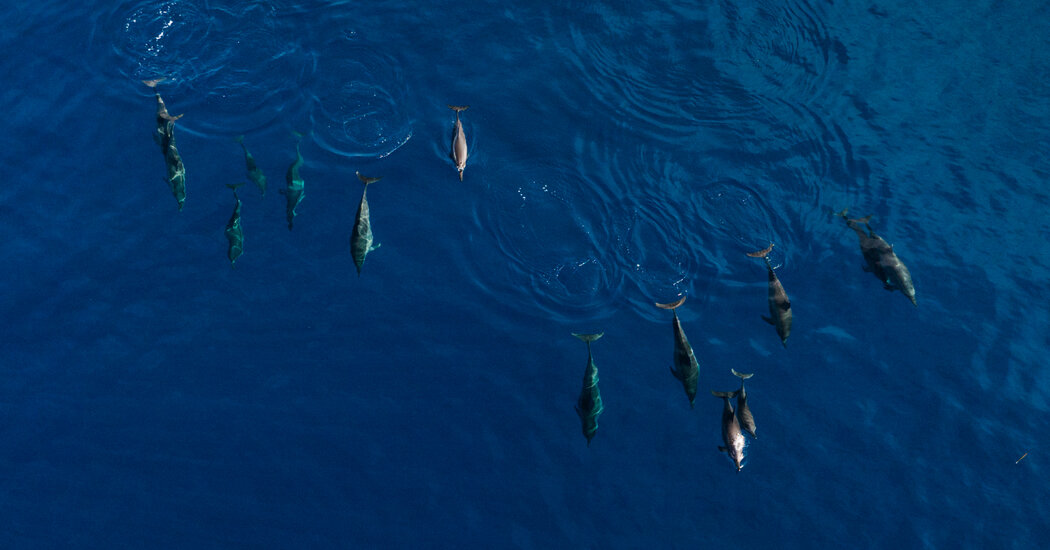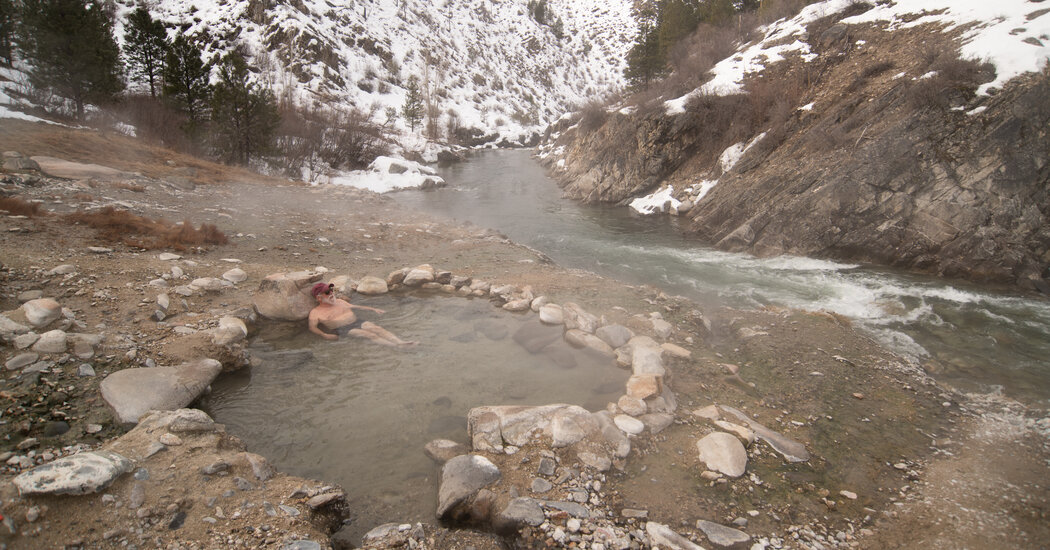Colorado Leads in Wildlife Crossing Innovations
The state has emerged as a leader in building wildlife crossings, which can save animals, money, and human lives. The aim was to protect motorists and wildlife along an especially grisly stretch of highway. Now, it was time to see whether the investment would pay off. Aran Johnson, a wildlife biologist for the Southern Ute Indian Tribe in the southwestern part of the state, walked up a bank to a newly constructed overpass crossing Route 160. He’d been trying not to worry about the project. After all, the existing research was in his favor. But the thought still crept in: What if all the effort, over 15 years, turned out to be a failure? It was a cool summer morning in 2022, with mist rising from the ground. Mr. Johnson carried trail cameras. Mule deer and elk wouldn’t be showing up in any numbers until later in the year, when they had to cross the highway to reach their wintering grounds. Still, he wanted the cameras ready to capture the earliest evidence possible of any animals using the structure.
Building Wildlife Crossings to Protect Motorists and Wildlife
The trail cameras have become an integral part of the wildlife crossing project, capturing not just the movement of animals but the diversity of species utilizing the structures. These images serve as a testament to the project’s success and play a key role in building support and raising awareness. The visuals of various animals, from majestic moose to playful otters, crossing safely, provide tangible proof of the effectiveness of these initiatives. This documentation has helped spark interest and understanding among the public and officials, bolstering efforts to secure continued funding and expansion. The communication and collaboration among states have become essential, with shared insights leading to improved strategies for designing crossings and managing wildlife corridors. Despite potential setbacks in federal funding, the widespread appreciation and success of such projects suggest a continuing commitment to expanding these life-saving structures, ensuring the preservation of both wildlife and human life on the road.
Wildlife Crossings in Colorado: A Success Story
The funding landscape for wildlife crossings has faced uncertainty due to shifts in federal priorities, particularly under the Trump administration. Grants that were intended to support these projects are now under scrutiny, with a focus on addressing congestion and enhancing safety taking precedence over environmental concerns. Despite this challenge, wildlife crossings have garnered support across political lines. Patricia Cramer, an ecologist with experience consulting on these projects, notes their bipartisan appeal, highlighting Colorado and Wyoming as leading examples. This broad approval stems largely from the universal benefits these crossings offer, tying in with the cultural value of environmental stewardship for communities like the Southern Ute Tribe. As Andrew Gallegos, a Tribal Council member, emphasizes, these projects are vital ways to preserve life and honor the land.
Evaluating the Success of Wildlife Crossings in Colorado
Locals had long known they had to pay close attention when driving along that stretch of Route 160, near the Chimney Rock National Monument. “I apologize for the gore, but it was littered with carcasses,” said Mark Lawler, a biologist with the Colorado Department of Transportation. In the early 2000s, Mr. Johnson, the biologist for the Southern Ute, started collaring mule deer to better understand how they moved over the landscape around the reservation. He analyzed his data and superimposed them on state records of wildlife-vehicle collisions. “It couldn’t be more perfect,” he said. “These things line up so precisely.” The Colorado Department of Transportation, which covers the vast majority of the cost for wildlife crossings, agreed to put in an underpass on the reservation. But the Southern Ute also wanted to install an overpass, since certain species, particularly elk, seem to greatly prefer them. The tribe came up with $1.3 million from the Bureau of Indian Affairs to make that happen.
Challenges in Funding Wildlife Crossings
As Colorado continues to build on its success with wildlife crossings, it sets a strong example of how effective collaboration and targeted investment can lead to safer highways and healthier ecosystems. The results speak for themselves, with significant reductions in wildlife-vehicle collisions and the flourishing of local fauna. Even amidst potential funding challenges, the commitment to protecting both human and animal lives remains steadfast. Ultimately, these efforts highlight the state’s dedication to environmental stewardship and the preservation of its diverse wildlife heritage for future generations.















Post Comment